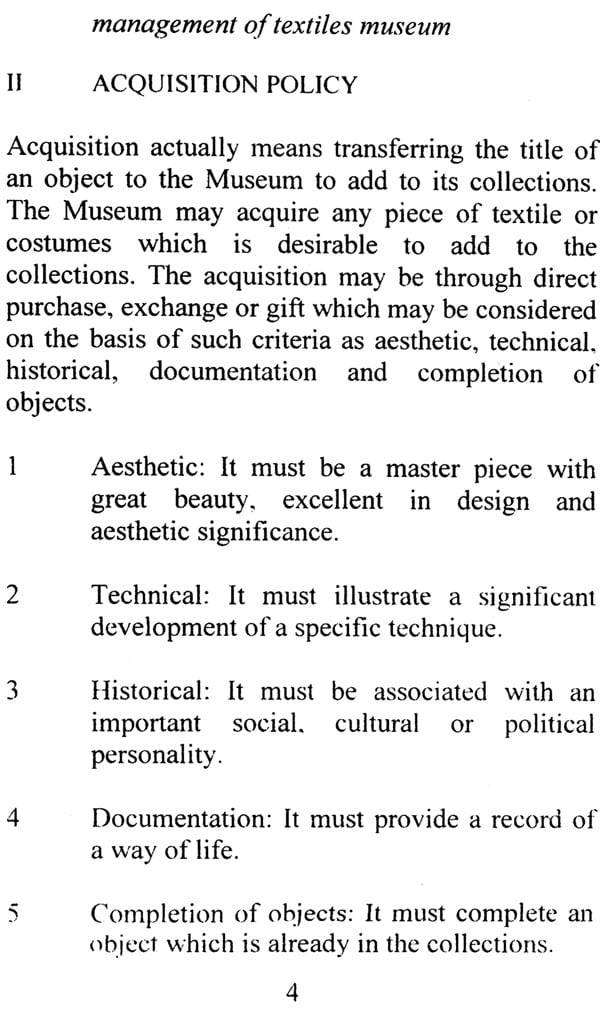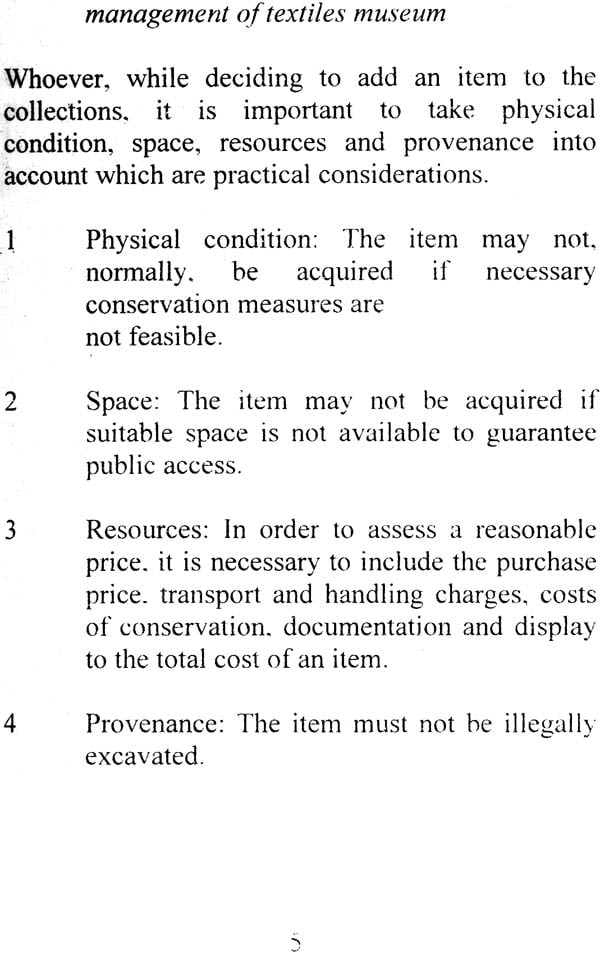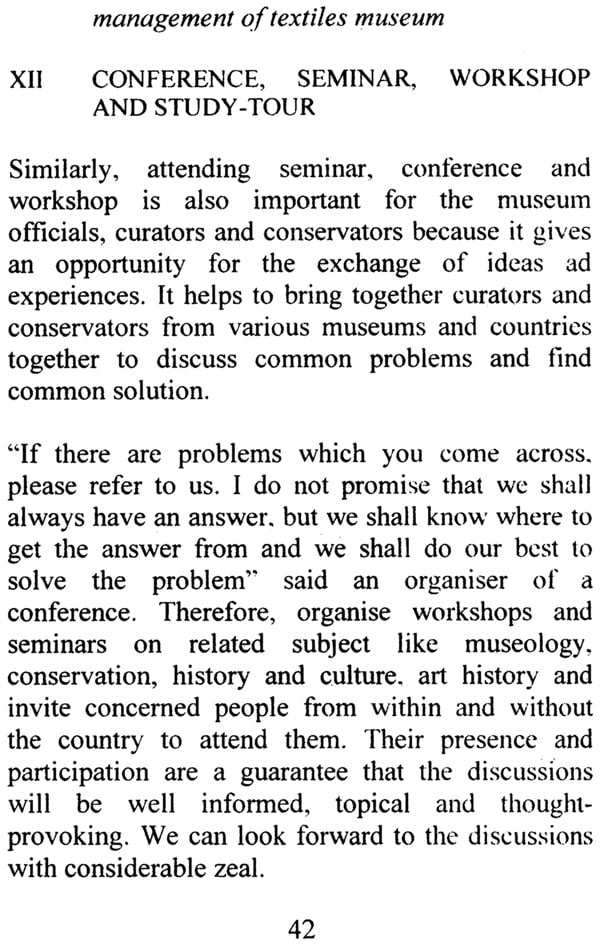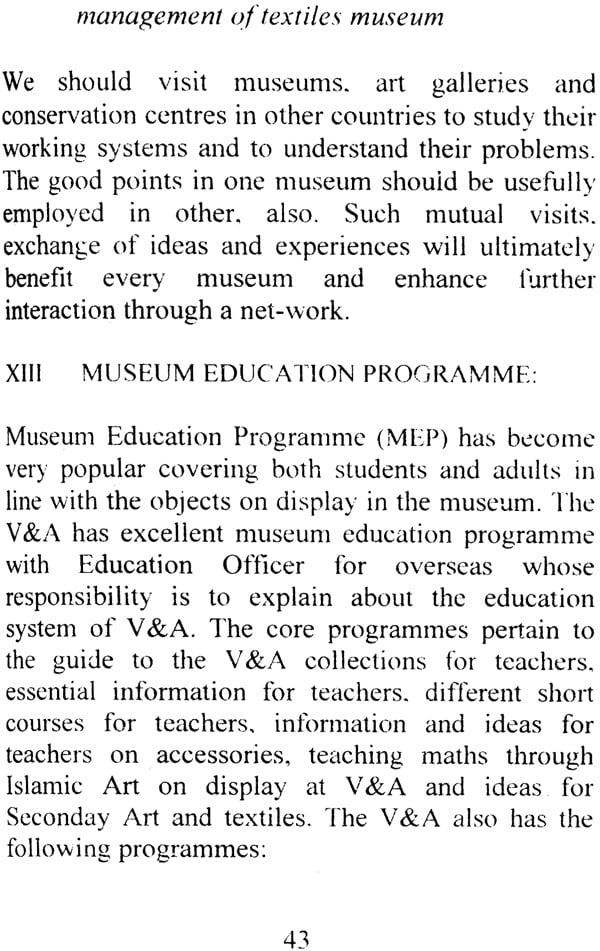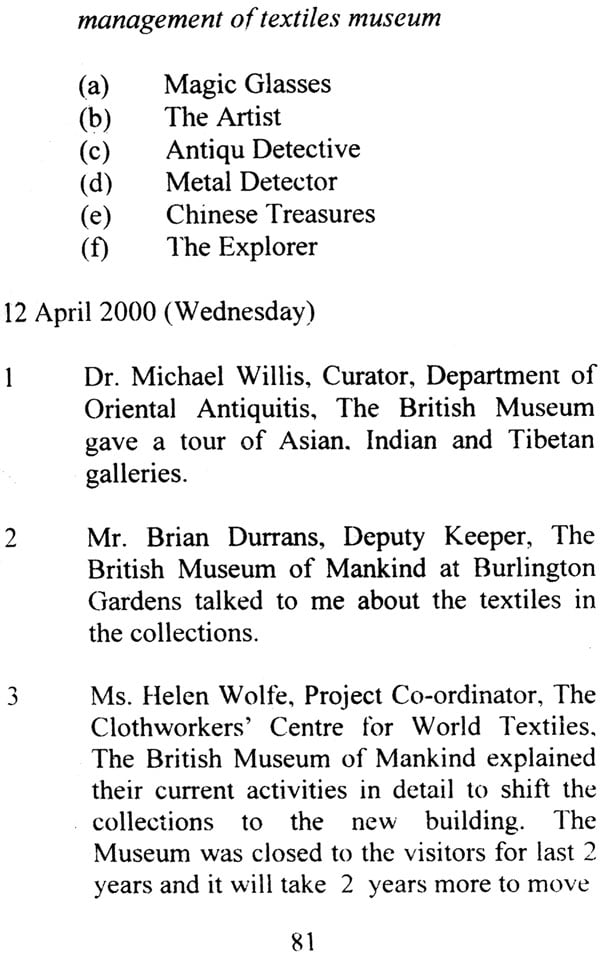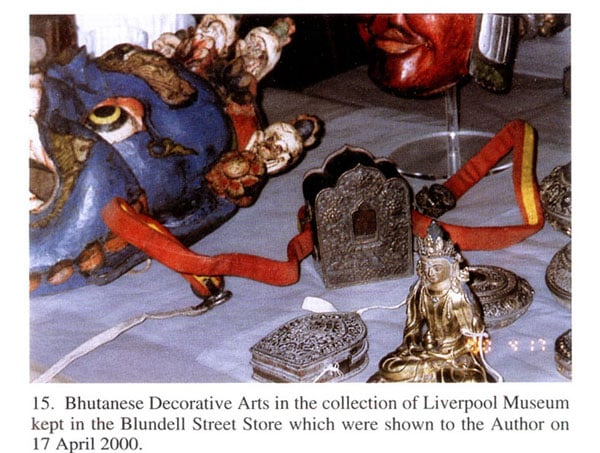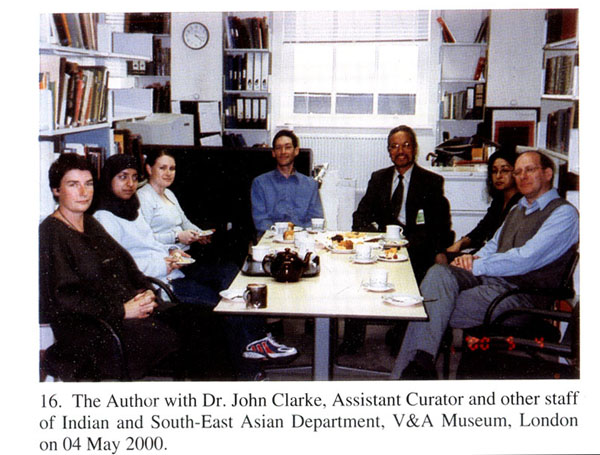
Management of Textiles Museum
Book Specification
| Item Code: | NAM638 |
| Author: | Dr. C. T. Dorji |
| Publisher: | Prominent Publishers |
| Language: | English |
| Edition: | 2013 |
| ISBN: | 9788192637648 |
| Pages: | 136 (17 Color Illustrations) |
| Cover: | Paperback |
| Other Details | 7.5 inch X 5.0 inch |
| Weight | 160 gm |
Book Description
What is Textile? Etymologically, the word" Textile" was derived from the Latin word "textere’ meaning to weave. It gives us understanding that textile covers all objects which have been prepared by weaving. However, it can be seen that laces, nets, knit-wear, felt are included in the category of textiles although they are not woven. Sometimes textile is defined as a material which is made of fibres having a flexibility or a drape. However, leather and hides have fibres structure and are flexible yet they are not defined as textiles. If we follow the manufacturing process then mats and baskets too should also be included in the category of textiles but they are not. Notwithstanding the definition a wide variety of material can be and is classified as textile.
The early men used animal hides and skin, tree barks and inter-laced leaves to cover their body before the techniques of spinning and weaving were know. The history is not known as to man's discovery that the long thin fibres from animals and vegetables could be used to be woven into a flexible cloth which could keep him warm, which could be washed and which could be repaired if tom. The development of fibres for making yarn and then spinning has been a great revolution. In the beginning the main fibres used for weaving were cotton, flex, wool, linen and silk but later on a number of others were added to the list of the fibres. Thus many types of fibres have been used for weaving fibres. However, a fibre must possess certain fundamental properties. to be used for weaving e.g. it must be long, strong, flexible, elastic and fold properly when made into cloth. It should be able to take dyes and to be able to retain them. As such, not many types of fibres have been used for textile making.
There are two main categories of textile fibres:
1 Natural fibres
2 Man-made fibres
Natural fibres are those which are found in nature in a fibrous form i.e. cotton; wool, linen and silk. Whereas man-made fibres are those which are made in laboratory by using non-fibrous materials. Natural fibres have three main groups:
1 Vegetable fibres
2 Animal fibres
3 Mineral fibres
Vegetable fibres include cotton, linen, jute hemp and ramie. The main constituent of such fibres is always cellulose. On the other hand, animal fibres include wool, produced from felt of animals and silk, obtained as filament from silk worms. The main constituents of animal fibres are proteins. The mineral fibres like asbestos are obtained from the earth. However, they are not much significance.
Now the term "Textile" is used to identify both woven and non-woven fabrics which includes the full range of weaving, knitting, felting and similar techniques. The textiles are made from a broad range of raw materials and can now incorporate decorative non textile elements like metal and plastic attachments. The range of size and shape of artifacts are also enormous along with the variations in the materials and techniques. Textiles play very important role in the society. Dresses and costumes not only give both men and women dignity and self- respect but also exhibit the talents and skill of weavers, dyers and printers.
| "Foreword | V | |
| Forwarding Letter | Vll | |
| Acknowledgements | IX | |
| Publishers' Note | Xl | |
| I | Introduction | 1 |
| II | Acquisition Policy | 4 |
| III | Record and Documentation | 12 |
| IV | Display | 13 |
| V | Storage | 19 |
| VI | Care and Maintenance | 24 |
| VII | Security | 27 |
| VIII | Conservation | 31 |
| IX | Packing and Transportation | 36 |
| X | Research and Publications | 37 |
| XI | Education and Training | 38 |
| XII | Conference, Seminar, Workshop and Study-Tour | 42 |
| XIII | Museum Education Programme | 43 |
| XIV | Visitor Services | 46 |
| Further Reading List | 48 | |
| Appendices | 51 | |
| References | 97 | |
| Photoplates | 101 |
